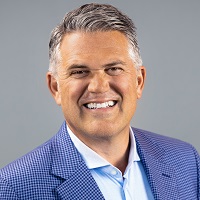Three Reasons I’m Bullish on Water, and You Should Be, Too
The U.S. government is heavily investing in water infrastructure, and that’s just one reason to dip your toe into investing in water.


Today is World Water Day, and I’d argue that there’s no more critical time for individuals to consider investing in this natural resource.
As many across the country continue to bear the effects of climate change by way of increasingly tempestuous seasons, impact investing is top of mind as it gets closer to home.
According to a report by the 2030 Water Resources Group (a public, private, civil society multidonor trust fund hosted by the World Bank Group), “By the year 2030, global freshwater demand is expected to outstrip supply by 40%, and an estimated 1.6 billion people will lack safely managed drinking water.”
From just $107.88 $24.99 for Kiplinger Personal Finance
Be a smarter, better informed investor.

Sign up for Kiplinger’s Free Newsletters
Profit and prosper with the best of expert advice on investing, taxes, retirement, personal finance and more - straight to your e-mail.
Profit and prosper with the best of expert advice - straight to your e-mail.
I’ve previously written about the myriad ways to invest in water, including water-related funds directly, utilities, water testing and metering, desalination and infrastructure.
Here’s why I’m still bullish on the commodity.
1. There’s inelastic demand.
The world needs water, but there is only a finite supply of the resource. Indeed, according to the Intergovernmental Panel on Climate Change, “Roughly half of the world’s population is experiencing severe water scarcity for at least part of the year.” Therefore, it becomes incumbent on governments, humanitarian organizations and impact investors to find sustainable solutions to maximize the supply our planet has.
Although we know how critical water is for human consumption, we often forget how necessary it is for crops like beef, chicken, corn, potatoes or cotton that propel necessary industries like agriculture and textile production.
In our tech-forward world, we forget the cyclical nature of energy — that water use requires energy, and energy production needs water. Perhaps we’re producing less paper, but what’s the bandwidth looking like on our Wi-Fi networks? We must sense the invisible strain on this resource.
When basins and lakes are parched, we’re reminded that healthy rivers do more than promote summer recreation, they also support urban vitality.
When you pick up your next glass of H2O, recall its power in transforming the world around us.
2. It’s a hedge against poor health outcomes.
In February, NPR reported that the Environmental Protection Agency (EPA) recently moved to categorize nine new PFAS (per- and polyfluoroalkyl substances) — more commonly referred to as “forever chemicals” — under the Resource Conservation and Recovery Act. These substances are known to cause certain cancers, affect immune systems and negatively impact cholesterol levels, among other issues.
Modern medicine has made incredible advances in the past few years, and yet, too many (and increasingly younger) Americans are afflicted with hereditary diseases and those brought on by lifestyle choices and increasing amounts of stress.
As health challenges continue to ebb and flow through our personal lives, it’s a good reminder to find alignment in the missions of the companies you’re investing in.
3. The U.S. government continues to heavily invest in infrastructure.
Since the Biden administration’s Bipartisan Infrastructure Law was announced in 2021, it has sunk $400 billion into 40,000 projects across 4,500 communities in our country. Most recently, in September the initiative drew $180 million to launch a water recycling program.
Water shortage supplies are a serious matter, and the stunning images of Lake Mead over the past two years have been a solid frame of reference for the toll it has taken on our local economies and communities. Looking at investing opportunities for water management agencies is a smart place to start to find alignment with the Biden administration’s ambitious goals. Indeed, government investment in the water sector further strengthens the investment case.
When investment dollars go to work in the water sector, it improves access to clean water, revitalizes infrastructure and improves overall water conservation for future generations. That’s a long-term wealth building strategy that we all can get behind.
ALINE Wealth is a group of investment professionals registered with Hightower Securities, LLC, member FINRA and SIPC, and with Hightower Advisors, LLC, a registered investment advisor with the SEC. Securities are offered through Hightower Securities, LLC; advisory services are offered through Hightower Advisors, LLC.
Related Content
- Best Water Stocks to Buy
- Why You Shouldn’t Ignore Investing in Commodities
- Five Downsides of Investing in Alternatives
- Why Investors Should Be Patient With Commodities
Profit and prosper with the best of Kiplinger's advice on investing, taxes, retirement, personal finance and much more. Delivered daily. Enter your email in the box and click Sign Me Up.

Peter J. Klein, CFA®, CAP®, CSRIC®, CRPS®, is the Chief Investment Officer and Founder of ALINE Wealth, a wealth management firm that specializes in providing clients with financial planning advice for every stage of their lives. Along with Peter’s deep financial wisdom, he adds considerable acumen in philanthropy, helping clients navigate family trusts, institutions, and nonprofits.
-
 A New TSA Fee Is Coming for Travelers With No REAL ID
A New TSA Fee Is Coming for Travelers With No REAL IDDon't have a REAL ID yet? You might get hit with a fee to go through security at the airport.
-
 Dow Soars 493 Points in Fed-Fueled Bounce: Stock Market Today
Dow Soars 493 Points in Fed-Fueled Bounce: Stock Market TodayNew York Fed President John Williams struck a dovish tone Friday, which eased Wall Street's worries over a potential December pause.
-
 Here's What Being in the 2% Club Means for Your Retirement
Here's What Being in the 2% Club Means for Your RetirementOnly 2% of the population has both a pension and more than $1 million saved. This is a great place to be, but also requires advanced tax planning.
-
 Insurance Buyer Beware: States Are Lowering the Bar for Agents and Brokers
Insurance Buyer Beware: States Are Lowering the Bar for Agents and BrokersA new California law removes 20 hours of required education before an aspiring agent can take tests to get licensed. They can then get licensed in other states.
-
 Still Working While Receiving Social Security? A Financial Adviser's Guide to the Earnings Test
Still Working While Receiving Social Security? A Financial Adviser's Guide to the Earnings TestIf you haven't reached your full retirement age yet, your Social Security check could take a hit, depending on how much you earn.
-
 I'm an Attorney and a CPA: Charitable Giving Just Got a Little Easier, But Also a Little Harder
I'm an Attorney and a CPA: Charitable Giving Just Got a Little Easier, But Also a Little HarderThe OBBB shakes up charitable deductions with a little help for non-itemizers and a new challenge for itemizers this holiday season.
-
 This HECM-QLAC Power Move Can Unlock Guaranteed Retirement Income
This HECM-QLAC Power Move Can Unlock Guaranteed Retirement IncomeCombining a qualified longevity annuity contract (QLAC) with a home equity conversion mortgage (HECM) can significantly boost your retirement income and more.
-
 I'm a Financial Planner: Coast FI Planning Could Be High Earners' Secret Retirement Weapon in the AI Age
I'm a Financial Planner: Coast FI Planning Could Be High Earners' Secret Retirement Weapon in the AI AgeA subset of the FIRE movement, Coast FI can help executives figure out whether their investments are enough to 'coast' so they can retire early and comfortably.
-
 I'm a Financial Planner: To Beat Inflation and Build Wealth, This Is the Strategy You Need
I'm a Financial Planner: To Beat Inflation and Build Wealth, This Is the Strategy You NeedIf you want to build long-term wealth, there's a tried-and-trusted strategy, and it starts with recognizing the inflation-busting power of equities.
-
 I'm the CEO of a Credit Union: This Is What We Do to Earn Our Members' Trust
I'm the CEO of a Credit Union: This Is What We Do to Earn Our Members' TrustWhat people want most from their financial institutions is a financial partner that listens, responds and acts with their best interests at heart.